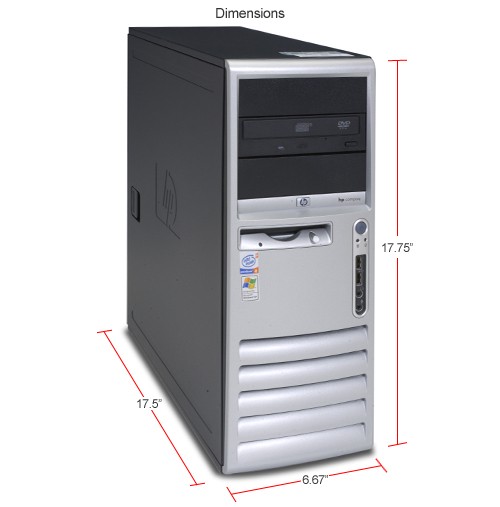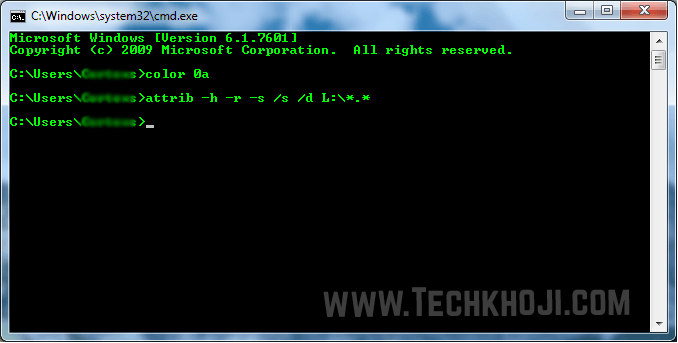How To Unhide Files In Recovery Partition Hp Desktop
HP Pavilion PCs and laptops offer a built-in recovery partition to restore your computer to the factory default settings. Often this partition is hidden and invisible to you under your system information. You can access this hidden partition and start the recovery process through Windows or by repeatedly pressing 'F11' during boot.
- How To Unhide Files In Windows 7
- How To Unhide Files In A Folder
- How To Unhide Files In Memory Card
- How To Unhide Files In Excel
This tutorial illustrates how to restore HP Pavilion/Mini/Envy laptop Recovery Partition with its backup image manually by using AOMEI Backupper in Windows 7/8/10/Vista/XP. This Recovery Partition contains boot files so it won’t allow you to back the partition up to USB drive. Plug the USB drive in HP PC. Launch AOMEI Backupper. If the computer originally came with Windows Vista and was upgraded to Windows 8, see Performing an HP System Recovery (Windows Vista). If the computer originally came with Windows 7 and was upgraded to Windows 8, see Performing an HP System Recovery (Windows 7).
Pavilion Laptops
Step 1
Shut down the laptop and disconnect all networking cables, external monitors and other devices. Leave the keyboard, mouse and power cord attached.
Step 2
Power up and open the Start screen. Type “Recovery Manager” into the Search box. Click “HP Recovery Manager” in the results. Enter an administrative password if prompted.
Dgn shp converter. Convert DGN to SHP Online Enjoy fast and easy to use online converter for geospatial data! Upload your DGN File and Convert. Our online converter of Microstation DGN format to ESRI Shapefile format (DGN to SHP) is fast and easy to use tool for both individual and batch conversions. Converter also supports more than 90 others vector and. Oct 16, 2013 Hi everyone, I am having a dgn file that include some polygon. Now I want to convert it into the shape file (.shp/.dbf file), are there anyone know this.

Step 3
Click “Windows Recovery Environment,” then “OK.” Your laptop will reboot into the Recovery Environment.
Step 4
Select “Troubleshoot” when your system restarts, then “Recovery Manager.” Choose your operating system, then click “Minimized Image Recovery.” Back up your system's files if desired, and follow the onscreen prompts to choose a backup method and location. If you do not wish to back up, click “Recover Without Backing Up Your Files,” then “Next.”
Step 5
Read the instructions on the Recovery Manager Welcome page and click “Next” when you're ready to continue. Your HP prepares for recovery, which can take up to 45 minutes.
Click “Continue” when the preparation completes. The recovery process begins, which formats and reinstalls your laptop's original software. When complete, click “Finish” to restart and complete setup.
Pavilion Desktops
Step 1
Shut down the desktop and disconnect all networking cables and other external devices. Leave the keyboard, mouse and monitor cables attached. Power on the computer.
Step 2
Open the Search box from the upper right corner of your screen and type “Recovery.” Click “Recovery Manager” from the results and enter an administrative password if necessary.
Step 3
Click “System Recovery.” Select “Yes” when asked to restore the computer to original factory condition. Click “Next” to restart your computer.
Step 4
Select “System Recovery” when your computer restarts. Back up your files if desired, or select “Recovery Without Backing Up Your Files” and click “Next.”
Click “OK” to clear the warnings to disconnect devices and confirm your data will be lost. Your computer will format and reinstall all original software to return the desktop to fresh-from-the-factory condition. Click “Finish” once the recovery process completes to restart. Complete the setup process by following the onscreen instructions.
Tips
- Pressing 'F11' during boot also works for systems running Windows Vista and 7.
- You can reconnect all your external devices once your system setup is completed. Turn off your computer or laptop and reconnect your external devices, then power on.
- Remember to update all drivers and operating system files to ensure proper compatibility and functionality. Reinstall your desired anti-virus protection to keep unwanted malware out of your system.
Warnings
- A system recovery can take hours to complete, and the computer restarts numerous times throughout the process. Keep your laptop plugged into an outlet to ensure proper power and disconnect your Internet connection to allow the procedure to complete successfully and without interruption.
- If Windows 8 was installed over a previous operating system, such as Windows 7 or Vista, the original operating system will be reinstalled during recovery. You'll need to reinstall Windows 8 once the computer finishes the recovery process.
Video of the Day
More Articles

On most PCs, the recovery partition is hidden by default and doesn’t appear in the File Explorer (Windows Explorer). One needs to open the Disk Management in order to view the recovery partition. That said, on some PCs the recovery partition might appear in File Explorer.
Since the recovery partition includes crucial files required to restore your Windows operating system, you might want to hide the partition from File Explorer to avoid accidentally deleting files or formatting the partition.
Hiding recovery partition or any other partition from Windows Explorer is fairly easy in Windows. All you need to do is remove the assigned partition letter (drive letter) from the partition. This can be done either via Disk Management, Command Prompt or third-party software.
Method 1 – hide recovery partition using Disk Management
Method 2 – hide recovery partition via Command Prompt
Method 3 – hide recovery partition using Partition Hider software (free).
Method 1 of 3
Hide recovery partition via Disk Management
Step 1:Open Disk Management. To do so, type create and format hard disk partitions in Start menu search box, and then press Enter key.
Alternatively, you can type Diskmgmt.msc in the Start menu search box or Run command box, and then press Enter key.
Step 2: In the Disk Management, right-click on the recovery partition (refer to the picture below) that you want to hide, and then click Change Partition Letter and Paths to open the same.
Step 3: Click Remove button, and then click Yes button when you see the confirmation box with “Some programs that rely on partition letters might not run correctly. Are you sure you want to remove this partition letter?” message to remove the partition letter.
That’s it! The recovery partition should now longer appear in Windows Explorer, File Explorer or This PC.
To show the recovery partition in File Explorer again, open Disk Management, right-click on the recovery partition, click Change Partition Letter and Paths option, click Add button, and then select a partition letter for the partition. That‘s it!
Method 2 of 3
Hide the recovery partition using Command Prompt
You can hide a drive using Command Prompt as well. It other words, you can assign or remove a drive letter from Command Prompt as well. Here is how to do that:
Step 1: Open elevated Command Prompt. To run Command Prompt as administrator, type CMD in Start menu search box, right-click on Command Prompt, and then click Run as administrator option.
Step 2: In the elevated Command Prompt, type the following commands and press Enter key after typing each command to view all partitions.
Diskpart
List volume
Step 3: Next step is to select the partition that you want to hide. To select the partition, type the following command.
Select volume X
In the above command, “X” is the partition number that you obtained in the previous step.
Step 4: Finally, type the following command to remove partition letter from the selected partition (removing the partition letter automatically hides the partition from File Explorer).
Remove letter X
Replace “X” with the actual drive letter of the recovery drive.
That’s it!
To add the partition letter and show the partition again in File Explorer
Step 1: Follow Step1, 2, and 3 in the above method to obtain the partition number of the partition that you want to show in the File Explorer again.
Step 2: Type the following command to select the partition.
Select volume X
(“X” is volume number)
How To Unhide Files In Windows 7
Step 3: To assign the partition letter to the selected partition, execute the following command.
Assign letter X
(“X” is the drive letter that you want to assign)
How To Unhide Files In A Folder
Method 3 of 3
Hide recovery partition using third-party software
How To Unhide Files In Memory Card
Windows Drive Hider is a free utility designed to hide one or more partitions from File Explorer. Download and launch Windows Drive Hider, select the partition that you want to hide, and then click Hide Partition button.
How To Unhide Files In Excel
The Drive Hider program is compatible with all recent versions of Windows operating system, including the latest Windows 10. Download software memperbaiki hp. The downloaded zip file or Windows Drive Hider includes a portable version of the software which doesn’t require an installation. Open up the folder labelled Portable to find the software.